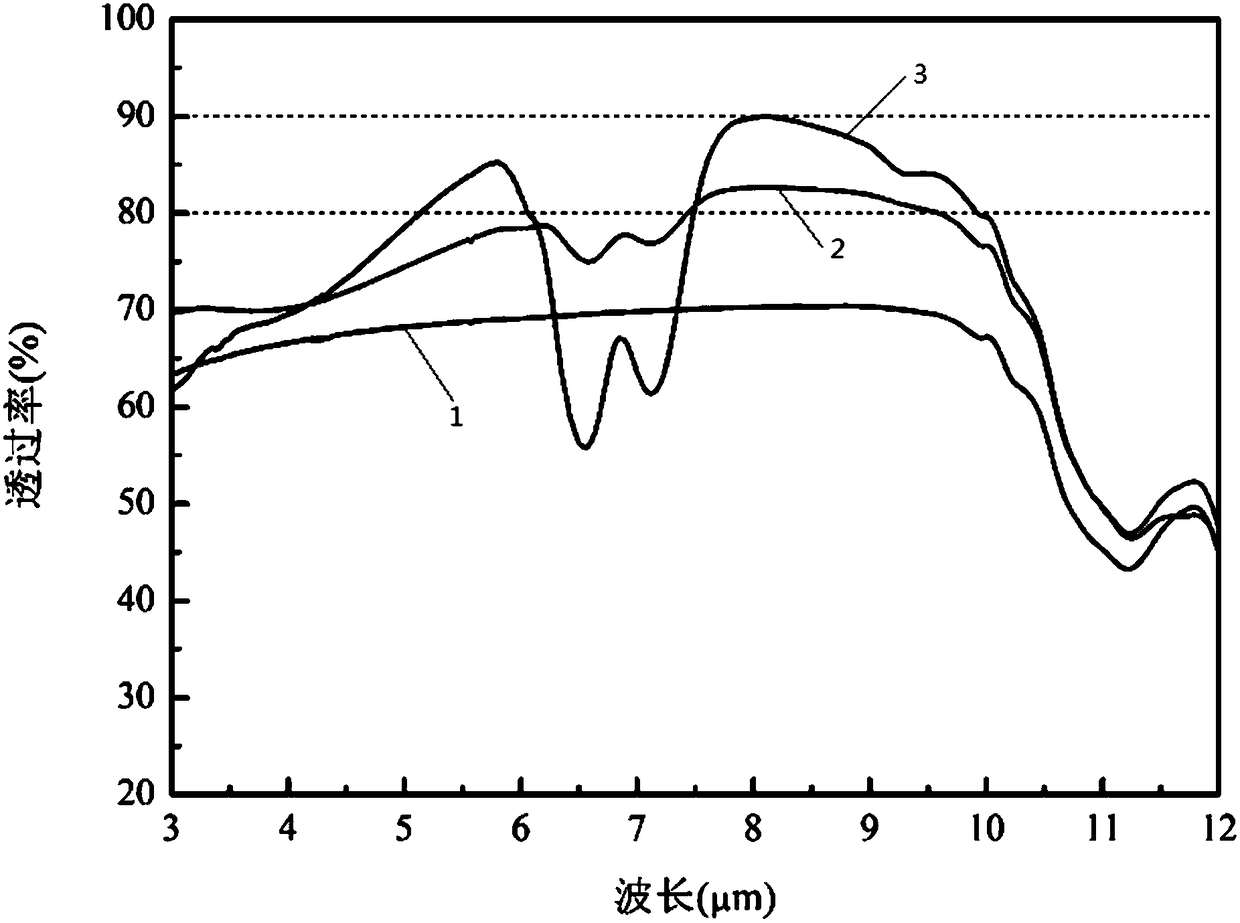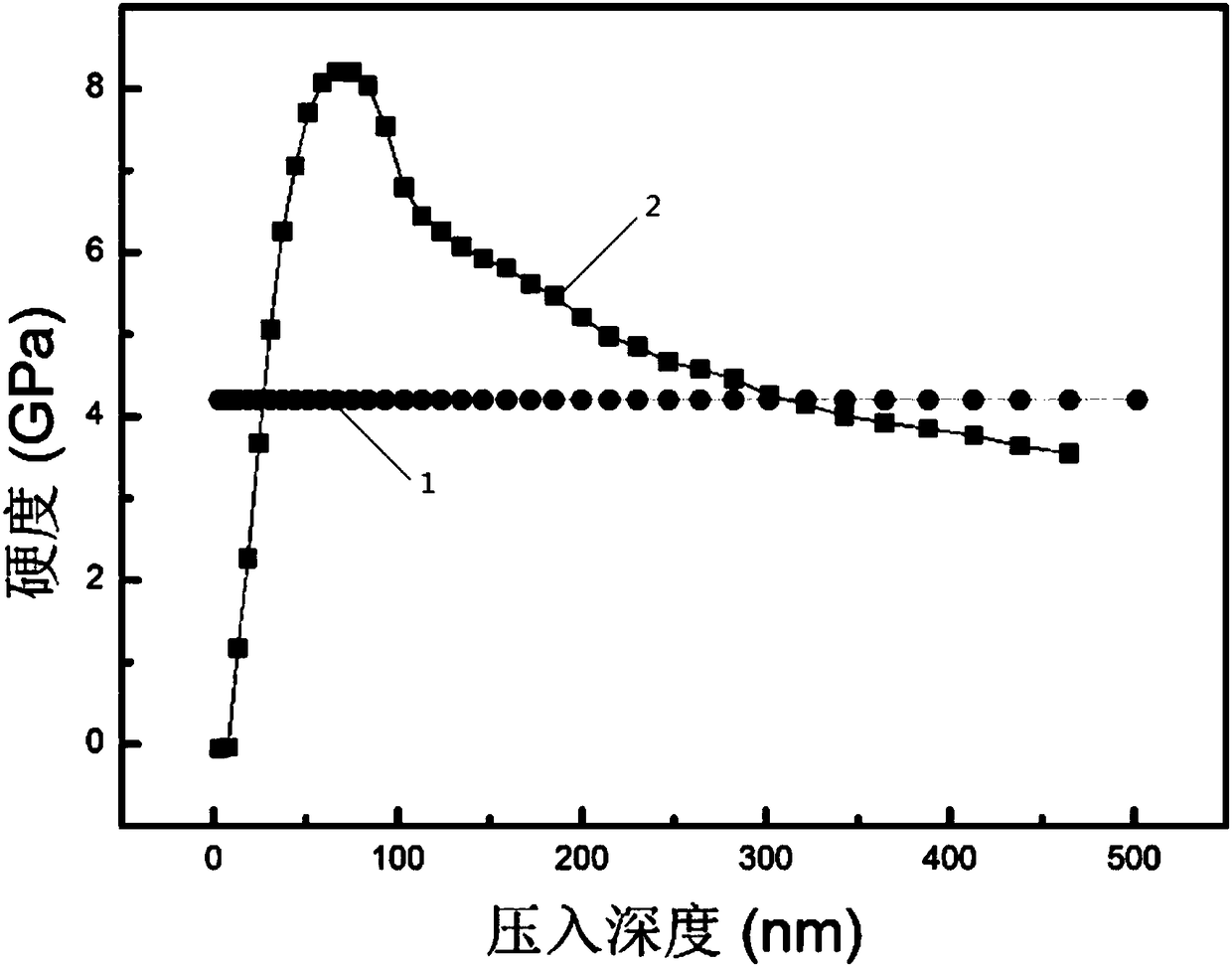Method for preparing long-wave infrared antireflective protective film
A long-wave infrared, protective film technology, applied in the direction of ion implantation plating, metal material coating process, coating, etc., can solve the problem of poor adhesion between the anti-reflection protective film and the substrate, low hardness of the anti-reflection protective film, and decreased optical properties of the film and other problems, to achieve the effect of improving sand and rain erosion resistance, infrared transmittance and hardness.
- Summary
- Abstract
- Description
- Claims
- Application Information
AI Technical Summary
Problems solved by technology
Method used
Image
Examples
specific Embodiment approach 1
[0021] Embodiment 1: The preparation method of a long-wave infrared antireflection protective film described in this embodiment is completed according to the following steps:
[0022] 1. Cleaning of targets and windows:
[0023] Under the condition of ultrasonic power of 100W-300W, put the metal Gd target in acetone, alcohol and deionized water for 10min-20min respectively, and then use nitrogen to blow off the dust attached to the surface to obtain a clean target; Under the condition of 100W ~ 300W, put the ZnS infrared window material in acetone, alcohol and deionized water for 10min ~ 20min, respectively, and then blow off the dust attached to the surface with nitrogen to obtain the substrate material;
[0024] 2. Preparatory work before coating:
[0025] First install the clean target on the magnetron sputtering target position, place the substrate material at the center of the heating table in the high-vacuum magnetron sputtering coating system, and then start the vacuum...
specific Embodiment approach 2
[0035]Specific embodiment 2: The difference between this embodiment and specific embodiment 1 is that in step 1, under the condition of ultrasonic power of 200W-300W, the metal Gd target is placed in acetone, alcohol and deionized water for 15min to 15min respectively. 20min, and then use nitrogen to blow off the dust attached to the surface to obtain a clean target. Others are the same as in the first embodiment.
specific Embodiment approach 3
[0036] Embodiment 3: The difference between this embodiment and Embodiment 1 or 2 is that in Step 1, the ZnS infrared window material is placed in acetone, alcohol, and deionized water in sequence under the condition of ultrasonic power of 200W to 300W. Wash for 15 min to 20 min respectively, and then blow off the dust attached to the surface with nitrogen to obtain the substrate material. Others are the same as in the first or second embodiment.
PUM
| Property | Measurement | Unit |
|---|---|---|
| thickness | aaaaa | aaaaa |
| thickness | aaaaa | aaaaa |
| thickness | aaaaa | aaaaa |
Abstract
Description
Claims
Application Information
 Login to View More
Login to View More - R&D
- Intellectual Property
- Life Sciences
- Materials
- Tech Scout
- Unparalleled Data Quality
- Higher Quality Content
- 60% Fewer Hallucinations
Browse by: Latest US Patents, China's latest patents, Technical Efficacy Thesaurus, Application Domain, Technology Topic, Popular Technical Reports.
© 2025 PatSnap. All rights reserved.Legal|Privacy policy|Modern Slavery Act Transparency Statement|Sitemap|About US| Contact US: help@patsnap.com


